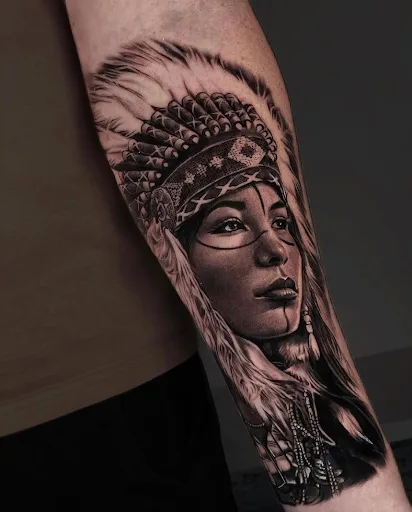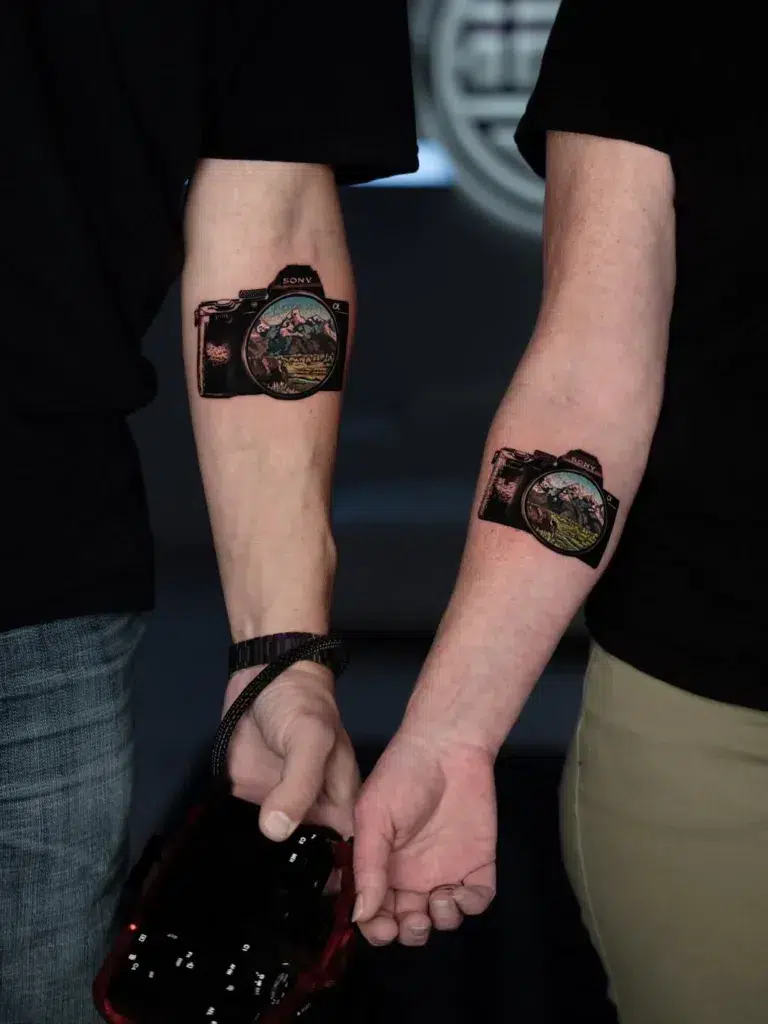If you’ve been thinking about getting a Sak Yant tattoo, you should first understand the deep-rooted meanings and fascinating cultural history behind them. In this article, we will take a look at how these fantastic designs have links to spirituality, religion, the history of the marvelous nation of Thailand, and what it takes to become considered a Sak Yant tattoo master.
What are Sak Yant Tattoos?
Yantra tattooing, also called sak yan is a form of tattooing that originated in ancient Cambodia, yet almost completely vanished due to the civil war. The Khmer Yantra remains to be the most genuine and pure. It consists of magical ancient Khmer scripts that protect and give luck to the soul. It is practiced in Southeast Asian countries, including Laos and Thailand. The practice has also begun to grow in popularity among Chinese Buddhists in Singapore. Sak means “to [tattoo]”, and yan is Thai for the Sanskrit word yantra.
The Sak Yant tattoo is an ancient art derived from Buddhist culture. This sacred practice is believed to bestow magical powers upon the wearer by the Buddhist monk who does the tattooing.
The Art and Global Influence of Sak Yant Tattoo
Sak Yant are beautiful geometric tattoos done in thick black ink and are typically made up of traditional script work, intricate patterns, meaningful symbols, religious signs, and other tributes to spirituality and nature.
Interestingly, these tattoos are made with traditional instruments that may seem rudimentary to someone more accustomed to standard tattooing equipment used in the West. The tattoos are engraved into the skin using a long metal spike, or sometimes bamboo, which has been sharpened to a point. The needle is then dipped into ink and is administered by hand by an expert tattooist, which is typically a Buddhist monk.
As for the tattooing process, it is done by repeatedly jabbing the needle through flesh by hand using a technique that’s referred to as hand poking and is said to be considerably more painful than an electric tattoo machine. They are amazingly intricate and take great skill to tattoo properly, so Buddhist monks train for many years to reach mastery.
Sak Yant (Yantra Tattooing) is now an International Phenomenon, with hundreds of Samnak Sak Yant around Southeast Asia, and even in Western Countries. However, to preserve the roots and tradition and to recognize the cause of this massive phenomenon known as Sak Yant Thai Temple Tattoos, we should pay respect to the source of the increase in popularity on a massive scale, namely, by recognizing the greatest of all Sak Yant Masters of Historical fame; Luang Por Phern Tidtakuno, and the Sak Yant Monks of Wat bang Pra, in Nakorn Pathom Province.
Sak Yant and Religion
In Thailand, almost everything is connected to Buddhist culture, which should be no surprise considering that 98% of their population follows the religion. As touched upon earlier, the Sak Yant tattoo is a holy practice that has deep ties to Buddhism but has also been heavily influenced by Hinduism and other spiritual practices over the years.
For this reason, the majority of Sak Yant tattoos take place within temples or other holy sites; however, in recent times, this has become less common.
As you might expect, there are many different styles, designs, and variants of Sak Yant tattoos, and each one of them is said to bring different benefits to the wearer, such as protection, fortune, success, and strength.
How to Get Sak Yant Tattoo
Sak yant designs are normally tattooed by ruesi, wicha (magic) practitioners, and Buddhist monks, traditionally with a long bamboo stick sharpened to a point (called a mai sak) or alternatively with a long metal spike (called a khem sak).
It’s commonly believed that the monk will choose the design for you; however, that is simply not true. You are free to choose your Sak Yant design, although if you turn up without a tattoo design in mind, the monk can advise and suggest a specific design for you based on what you discuss.
If you want to stick to the Sak Yant traditions, then you need to take a trip to Thailand and consult one of the Buddhist monks who are considered masters in art. Then you can discuss the design, the placement, and the meaning behind your new tattoo.
However, you can get this tattoo done in almost any major city around the world these days. Just search for Sak Yant Tattoo, whatever your nearest city is, to see if there is a suitable tattoo parlor nearby. Just make sure you understand what you want first, find the right tattoo artist for you, and do some research on the meaning beforehand.
What are the Sak Yant Codes of Conduct?
Interestingly, the tattooist is considered to be the master, whereas the wearer is referred to as the disciple. Buddhist monks say prayers as the tattoo is administered, and once the tattoo is completed, it is given a final blessing to charge and activate it with the powers of the Sak Yant masters.
However, if the disciple wants to attain the powers held within the sacred Sak Yant tattoo, they must follow the Sak Yant codes of conduct throughout their life, and they are:
- Do not kill
- Do not steal
- Do not desire another person’s lover or spouse or be unfaithful to your own
- Do not lie
- Do not get intoxicated
- Do not speak ill of your mother
As you might expect, these codes of conduct are largely based on the Buddhist religion’s core values and morals. In short, the bottom line is, that if you want to receive the blessing bestowed upon the tattoo, then you must become an honorable and virtuous person. Otherwise, you will receive no benefit.
The rules of conduct can also vary depending on where the tattoo was done. The temple and its master usually decide these rules. Some of them can seem a little unorthodox, which is why it’s worthwhile checking them out before you get inked. Here are some of the additional rules decided by masters, lineage, and certain temples:
- Do not commit evil deeds
- Do not claim to have powers because of your tattoo
- You cannot fight or compete with someone who has a tattoo from the same master
- Do not eat any other Gourd type of vegetable
- Do not eat food from a temple
- Do not duck under a banana tree
Training in Sak Yant designs
Usually, to become a master, one must first become an apprentice of a current master and study and learn from their craft. Not only does this require the tattooist to become extremely skilled in the intricacies of tattooing, but they must also become devotees to the steep history and culture of the Sak Yant tattoo, spirituality, and the Buddhist religion.









